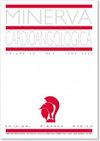Long term outcomes of percutaneous or surgical treatment in left main disease.
Q3 Medicine
引用次数: 1
Abstract
BACKGROUND Long term efficacy and safety of either surgical or percutaneous treatment left main coronary artery disease treatment is lacking. METHODS We conducted a systematic review and meta-analysis of the most updated randomized clinical trials that compared the efficacy of coronary artery bypass surgery (CABG) or percutaneous coronary intervention (PCI) for the Left Main Coronary Artery (LMCA) disease. RESULTS We identified 6 studies, providing data on 5812 patients. The mean follow-up was 6.7 years. PCI was associated with an increased risk of major vascular events (MACE) (IRR 1.24, 95% confidence interval (CI) [1.03-1.67], p<0.01), and coronary revascularization (IRR 1.69, 95% CI [1.42-2.03], p<0.01) compared to CABG. Furthermore, all-cause death, MI and stroke events were not statistically different between the two therapeutic revascularization methodologies (IRR 1.06, 95% CI [0.90-1.24], p=0.47, IRR 1.35, 95% CI [0.84-2.16], p=0.03 and IRR 0.66, 95% CI [0.43-1.01], p=0.05, respectively). CONCLUSIONS LMCA PCI has an overall same survival compared to CABG in the long term follow up. Nevertheless, MACE and revascularization events were more frequent in PCI compared to CABG.经皮或手术治疗左主干疾病的远期疗效。
背景:目前尚缺乏手术或经皮治疗左主干冠状动脉疾病的长期疗效和安全性。方法:我们对最新的随机临床试验进行了系统回顾和荟萃分析,比较了冠状动脉搭桥手术(CABG)或经皮冠状动脉介入治疗(PCI)治疗左主干冠状动脉(LMCA)疾病的疗效。结果我们纳入了6项研究,提供了5812例患者的数据。平均随访时间为6.7年。与CABG相比,PCI与主要血管事件(MACE) (IRR 1.24, 95%可信区间(CI) [1.03-1.67], p<0.01)和冠状动脉血运重建术(IRR 1.69, 95% CI [1.42-2.03], p<0.01)的风险增加相关。此外,两种治疗性血运重建方法的全因死亡、心肌梗死和卒中事件无统计学差异(IRR分别为1.06,95% CI [0.90-1.24], p=0.47, IRR为1.35,95% CI [0.84-2.16], p=0.03, IRR为0.66,95% CI [0.43-1.01], p=0.05)。结论在长期随访中,slmca PCI与CABG的总体生存率相同。然而,与CABG相比,PCI中MACE和血运重建事件更频繁。
本文章由计算机程序翻译,如有差异,请以英文原文为准。
求助全文
约1分钟内获得全文
求助全文
来源期刊

Minerva cardioangiologica
CARDIAC & CARDIOVASCULAR SYSTEMS-
CiteScore
1.60
自引率
0.00%
发文量
0
审稿时长
>12 weeks
期刊介绍:
A Journal on Heart and Vascular Diseases.
 求助内容:
求助内容: 应助结果提醒方式:
应助结果提醒方式:


